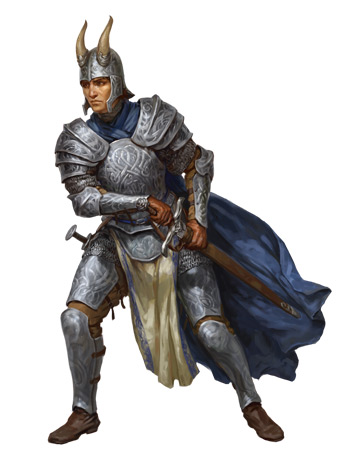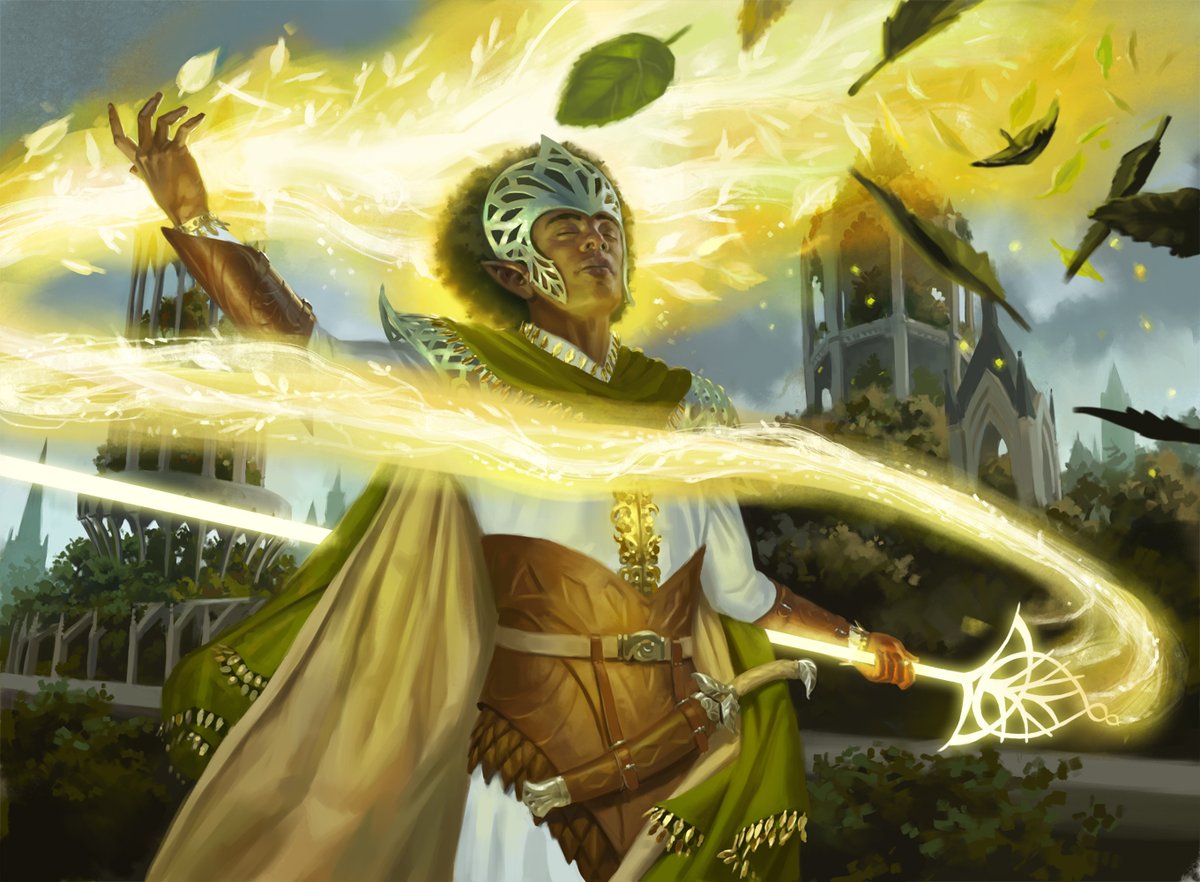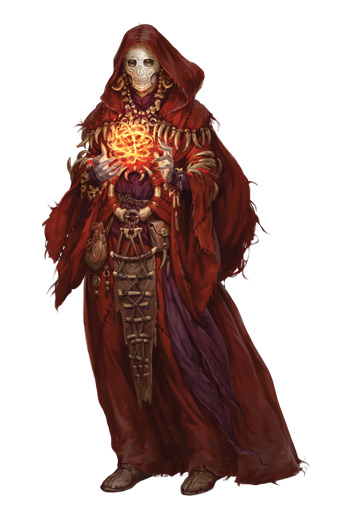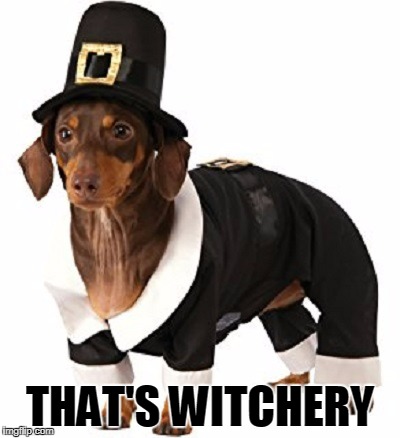War is upon the world of Krynn! As Takhisis’ Dragon Armies march against the free people of the land, still recovering from the devastating Cataclysm, there are only a few bastions of the ancient might left standing. The Knights of Solamnia and the Mages of High Sorcery might be Krynn’s only hope in the war to come. Luckily for you, they’re recruiting!
In Dragonlance: Shadow of the Dragon Queen, you can choose to become a member of these associations by selecting the corresponding background and feats during character creation or when you level up. Today, we’ll take you through what these factions are all about and provide some details on the benefits of your membership.
- Commit to honor with the Knights of Solamnia
- Knight of Solamnia background and feat
- Dedicate to power with the Mages of High Sorcery
- Mages of High Sorcery background and feat
Commit to Honor With the Knights of Solamnia

Armored in polished silver that gleams in the dawn light, banners flapping in the breeze, the Knights of Solamnia brought peace and order wherever they went. This faction of honor-bound soldiers was established thousands of years before the Cataclysm, during the Age of Dreams. However, since the fiery mountain smote the lands of Krynn 300 years ago, the Knights have become a shell of their former glory.
During the rise of the holy empire of Istar 1,000 years ago, the Knights of Solamnia allied themselves with the line of kingpriests that ruled the nation. One kingpriest eventually caused the Cataclysm, which has scarred Krynn for generations. The Knight of Solamnia’s affiliation with Istar has caused Krynn’s citizens to garner distrust for the organization. But, there is still honor and courage in the Knights of Solamnia. While some knights have forsaken their Oaths and retreated to their fortresses, others have taken up the mantle and work to make Krynn a peaceful land once more.
Which of the 3 Knightly Orders Will You Join?
Each Knight of Solamnia is not only expected to follow a code of conduct known as the Measure, but they must commit themselves to one of three Oaths that guide their purpose. These Oaths are explored below.
 Knights of the Crown
Knights of the Crown
The Knights of the Crown are the foundation of the Knights of Solamnia. Most knights start in this order, where they learn the importance of honor, loyalty, and obedience. Knights of the Crown focus on working collaboratively and value the life of their comrades as much, if not more than their own.
In my opinion, this order is perfect for Battlemaster fighters and Oath of the Crown paladins who can use their abilities to control the battlefield and aid their brethren. It also befits College of Swords and Valor bards, who are able to buff their allies with their Bardic Inspiration, and War Domain clerics, who can offer battlefield healing.
Knights of the Sword
Those who commit to the Knights of the Sword are the most courageous and heroic of the Knights of Solamnia. Dedicated to upholding justice and protecting the innocent, a Knight of the Sword would not hesitate to give their life if it meant that another would live.
I think, due to their lawful good nature, paladins from the Oath of Devotion would frequently be drawn to the moral values of the Knights of the Sword. Champion fighters, Oath of Glory paladins, and Peace Domain clerics also seek out this order as it promises heroic quests to defend the weak.
Knights of the Rose
The noblest of the orders, the Knights of the Rose, follow the teachings of the god Paladine. Knights that join this order are usually the most experienced of the organization and have had their ideals of honor and loyalty tempered by countless trials.
It seems to me that any paladin, fighter, or other class that has proven themselves is welcomed to the Knights of the Rose. Clerics from the Life and Light Domains are likely to meet the order's lofty expectations, which are guided by the Father of Good, Paladine.
Choosing the Knight of Solamnia Background
If you think you’re cut out for the Knights of Solamnia, that you meet the high expectations of honor and loyalty expected from these oath-bound defenders, you can choose the Knight of Solamnia background at character creation (with DM permission). Along with some skill and language proficiencies, this background provides your character with the Squire of Solamnia feat.
Squire of Solamnia Feat
Prerequisite: Dragonlance Campaign, Fighter or Paladin Class or Knight of Solamnia Background
This feat gives you two benefits. First, mounting and dismounting your steed only costs 5 feet of movement, instead of the typical half of your movement speed. Second, you’re able to give yourself advantage on weapon attacks a limited number of times per long rest. If you hit with your attack after using this feature, you also deal some additional damage.
While mounted combat may be a rarity in some D&D campaigns—getting a horse into a dungeon is always a pain, after all—Dragonlance: Shadow of the Dragon Queen will feature large-scale battles, which should give your Knight of Solamnia plenty of opportunity to make an epic charge into battle.
On top of this, being able to get automatic advantage on attacks is every martial character’s dream. Sometimes you just need an attack to hit. Maybe your paladin is looking to land a high-level Divine Smite or perhaps your fighter uses Great Weapon Master and wants to negate their negative bonus. Either way, having access to a limited number of advantage attacks gives your martial character an indispensable resource.
Dedicate to Power With the Mages of High Sorcery

The Mages of High Sorcery is a mysterious organization devoted to the study of magic. They are also committed to policing the use of magic across the continent. If a member of the Mages of High Sorcery were to come across a renegade mage, a magic user that the Mages have excommunicated, they are duty-bound to report them to the Conclave—the overseeing body of the Mages of High Sorcery.
While any spellcaster can join the organization, there is a test that all members must undergo if they would like to become a full members and join one of the Mages’ three orders: the White, Red, and Black Robes.
Which Robe Will You Don?
The tests dolled out by the Mages of High Sorcery are meant to weed out unworthy mages from the organization. More often than not, failing the test means death. Before you commit to putting your life on the line in order to join the Mages of High Sorcery, let’s take a look at the orders that make up the organization.
 Order of the White Robes
Order of the White Robes
White Robes view it as their responsibility to use their magic to make the world a better place. These ideals follow the teachings of Solinari, the god of Krynn’s white moon. To me, it seems like Celestial warlocks, Divine Soul sorcerers, and good-aligned wizards would make up the majority of this order’s membership.
Order of the Red Robes
Those who choose the Red Robes are usually neutrally aligned and want to further their study of magic for the sake of their personal power. That said, Red Robes are not entirely self-serving. They still follow Lunitari, the neutral god of Krynn’s red moon, and strive to maintain the balance between good and evil.
Due to its flexibility, it makes sense to me that this order would draw a vast array of magic users from all walks of life. Any caster that doesn’t want to adhere to the strict expectations of the White Robes while not aligning themselves with the reviled Black Robes would find the Red Robes a happy medium.
Order of the Black Robes
As egocentric as they are ambitious, Black Robes are often feared because of their thirst for power and lack of morals. The teachings of the god of Krynn’s black moon, Nuitari, puts those that join the Black Robes on a path of personal gain at the expense of all others.
While any caster could be seduced by the power of the Black Robes’ promise, in my opinion, its most likely followers are Fiend, Great Old One, and Undying warlocks, and School of Necromancy wizards.
Joining the Mages of High Sorcery
Whether your magical prowess got you noticed by the Mages of High Sorcery or you’ve had to struggle your way into their good graces, your character can reflect their membership with the Mage of High Sorcery background. On top of language and skill proficiencies, this background provides the Initiate of High Sorcery feat, which allows you to expand your magical repertoire based on the god of magic you commit to.
Initiate of High Sorcery Feat
Prerequisite: Dragonlance Campaign, Sorcerer or Wizard Class or Mage of High Sorcery Background
First off, any character that takes this feat gets to pick a wizard cantrip to add to their repertoire. Second, depending on the moon that influences their magic, they are granted two 1st-level spells from a list of four choices. These spells can be cast without a spell slot once per long rest or can be cast with any spell slot appropriate to the spell. When you select this feat, you get to choose whether your spellcasting modifier for these spells will be Intelligence, Wisdom, or Charisma.
Prepare Your Character for War!
In Dragonlance: Shadow of the Dragon Queen, Krynn’s fate stands on a knife’s edge. If the forces of good cannot muster the power to defeat the dark Dragon Armies, all will fall to the rule of the Dragon Queen Takhisis. Will your party of heroes look to these ancient and powerful factions to help save the world? Or will they take another path to battle the forces of evil?
Mike Bernier (@arcane_eye) is the founder of Arcane Eye, a site focused on providing useful tips and tricks to all those involved in the world of D&D. Outside of writing for Arcane Eye, Mike spends most of his time playing games, hiking with his girlfriend, and tending the veritable jungle of houseplants that have invaded his house.








-
View User Profile
-
Send Message
Posted Nov 1, 2022Exactly, that's why it reminded me of him. 5e is my first edition, so I first heard about Lord Soth when I read that text block about him in the death knight's description, and I got curious so I looked up more about him, and that's how I heard about the Knights of the Rose, and Lord Soth being known as the Knight of the Black Rose after his fall.
-
View User Profile
-
Send Message
Posted Nov 1, 2022Holy cow those first level feats are good. Maybe even too good. Also no mention of the cavalier?
-
View User Profile
-
Send Message
Posted Nov 2, 2022Ah yes, because Torr is fully filled out in their adventure books and totally didn't keep all their adventures in the Sword Coast.
-
View User Profile
-
Send Message
Posted Nov 2, 2022Paladins as Sword Knights make perfect sense, most notably if they're in the suborder of the Clerists. At the start of the war, no, but with the rediscovery of godly magic, absolutely.
Heck, if you look at the Sword Knight abilities from 3rd edition, many mimic that of the paladin. I want to say that 2e was much the same.
-
View User Profile
-
Send Message
Posted Nov 2, 2022Very wrong you say ???? hehehehehehe... you should say "" Berry bad, WoTC, Berry bad !! "" hahahahaha
-
View User Profile
-
Send Message
Posted Nov 2, 2022What kind of Witchery is this ????

-
View User Profile
-
Send Message
Posted Nov 2, 2022We've already had that since PHB came out. "Rock gnome" explicitly mentions Tinker gnomes from Krynn.
-
View User Profile
-
Send Message
Posted Nov 3, 2022Rock gnomes don't cover inventions and critical failures. It was a whole mechanic in older editions. Tinker gnomes are afflicted/cursed rock gnomes.
-
View User Profile
-
Send Message
Posted Nov 3, 2022Upvoted!
-
View User Profile
-
Send Message
Posted Nov 4, 2022You mean "banneret"
-
View User Profile
-
Send Message
Posted Nov 4, 2022The original rules for the Knight of Solamnia classes from Dragonlance Adventures (1987) did indeed include clerical spells for Knights of the Sword. The text states that between the Cataclysm and the War of the Lance, their traditions did not change, but obviously they did lose access to spells. A cleric or paladin without divine abilities is not a fighter, they are just a nerfed cleric or paladin.
I modeled the Knights in homebrew using the multiclassing and faction rules:
There isn't a need for new backgrounds, feats, or even classes to adequately represent the Knights in D&D5. It's all right there in the PHB.
-
View User Profile
-
Send Message
Posted Nov 4, 2022Fitting.
Since Lord Soth *was* a Knight of the Rose before his undeath. He was initially from Krynn :)
-
View User Profile
-
Send Message
Posted Nov 4, 2022Technically 5E clerics do not need to be devotees of any God. Paladins, canonically in 5E, are not followers of any church so could very much be knights of the sword.
-
View User Profile
-
Send Message
Posted Nov 5, 2022NOICE
-
View User Profile
-
Send Message
Posted Nov 6, 2022That raises a question then. Do you want to play a generic 5e game that is no different than any other sitting, or do you want to play Dragonlance?
Paladins wouldn't have divine magic at the start of the war. Remember, the war was going on for about 5 years prior to the heroes of the lance meeting at the last home. All magic in Krynn, both Arcane and Divine comes from the Gods. Divine magic was cut off at the start of the cataclysm. However, divine magic would have returned when Goldmoon discovered the Blue Crystal Staff. This was why Takhisis was working so hard to hunt her down and find the staff. The Discs of Mishakal just served to teach people how to worship again. Since the knighthood never changed their traditions, they would have received divine powers, even if they didn't recognize it as god given.
-
View User Profile
-
Send Message
Posted Nov 6, 2022Technically Paladins don’t have divine magic, their magic is born from sheer conviction in their oaths and causes.
You can play a “godless” cleric the same way, while a true cleric, one who speaks with their gods and acts in accordance to their wishes, were nonexistent until Goldmoon
-
View User Profile
-
Send Message
Posted Nov 6, 2022Love it! getting the book for sure! Just started but this looks promising!
-
View User Profile
-
Send Message
Posted Nov 6, 2022The Gods of Krynn don't allow any outside influences. Prior editions made it a point that outside faiths lose contact with their gods. Ironically, because all the Krynn gods live on the outer planes, clerics leaving Krynn can still cast spells. However, a Krynn god would likely take great interest in a foreign cleric showing up and seek them to be a patron. This is why there are no Drow in Krynn. Lolth cannot get a foothold into the world to influence the elves. Similarly, Elves on Krynn are God created, and not descended from the Fey. Goblinoids, and Hags are also descended from ogres, and not fey.
-
View User Profile
-
Send Message
Posted Nov 6, 2022I am sorry to say it, but start preparing yourself for disappointment now. Clerics and paladins are confirmed playable in this adventure (of course), and there is no way that it is an accident that there has been zero discussion about that in any format, since the book was announced. However they have decided to implement this, Wizards knows it is going to piss off a lot of old fans.
I'm really hoping that they just rejigger the timeline and move Elistan's return to Solamnia earlier in the War, but it's more likely that Serafima is right and they're just going to remind us that cleric and paladin spells don't have to come from gods. It's a bad take, for sure.
-
View User Profile
-
Send Message
Posted Nov 6, 2022When in the timeline is the adventure set?